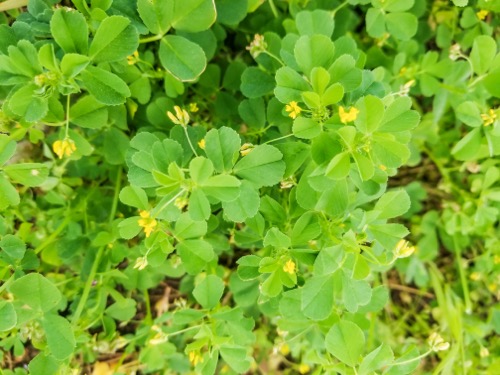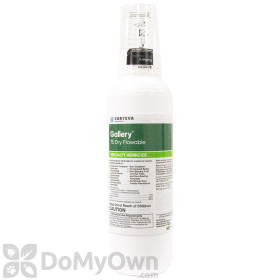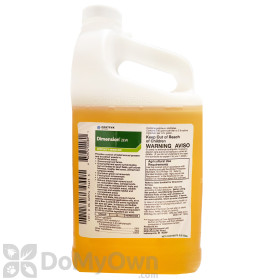Follow a Good Lawn Maintenance Schedule

If you've found Black Medic in your lawn or landscaping, you may be trying to find the best ways to keep it from returning. Creating and maintaining a healthy lawn by following a lawn care maintenance schedule is an important step in preventing weeds from growing in your lawn.
Also known as hop medic or black clover, Black Medic thrives in low-nitrogen, dry, compacted soil. Taking steps to improve your lawn's health, including proper fertilization, irrigation, and aeration, coupled with a pre-emergent herbicide applications can reduce the number of weeds in your turf.
Follow the steps below to get and keep your lawn healthy to prevent Black Medic from returning.
Ensure Your Lawn Gets the Right Fertilization
Because Black Medic and other legumes such as white clover can fix their own nitrogen, you will find this low-growing weed taking hold in areas that are low in nitrogen. The best defense to prevent Black Medic from invading your turf is to follow a fertilization regimen that gives your soil the proper amount of nitrogen.
Start by performing a soil test to check the nutrient levels in your lawn. In addition to giving you valuable insights about the levels of nitrogen, potassium, and phosphorus in your lawn, soil tests can also identify other issues such as pH levels. Once you know what nutrients your lawn needs, you can apply fertilizers and soil amendments to address any issues. This will help your turf grow stronger, which will help reduce the number of weeds that will invade unhealthy turf.
Once you know the needed fertilizer NPK ratio, you can use our fertilizer selector tool to find the right solution for your lawn.
Follow Good Lawn Care Cultural Practices
If your soil is difficult to dig up, you may need to reduce the amount of compaction in the soil and improve irrigation. Black Medic often grows in areas where the soil dry and compacted. You'll often find it in areas near sidewalks, driveways, curbs and other areas where the soil has become pressed together.
Having a compacted lawn reduces the amount of movement in the soil, leaving less room for grass root development. In areas where the soil is compacted, water may collect on the surface of your lawn as its not as easily absorbed into the dense soil below. This limits the amount of water and nutrients your grass and other desirable plants can uptake from the soil.
Aerating your lawn to break up the compaction, ensuring your lawn has proper drainage and irrigation, and by following good mowing practices, you can help keep your lawn as healthy and allow your turf to grow thick and vigorous. This will help your lawn edge out Black Medic and other weeds that want to encroach into your grass.
Check out these resources for more information about keeping your lawn healthy year-round:
Apply a Pre-Emergent
While great cultural practices can give your lawn a head start on preventing weeds, applying pre-emergent herbicides, also known as weed preventers, in the spring and fall to help prevent Black Medic from taking over.
Weed preventers containing the active ingredients dithiopyr and isoxaben are effective in preventing Black Medic.
Black Medic can be both a summer annual and winter annual weed and grows from seed. The seeds begin to germinate in the spring as soil temperatures begin to warm and in the fall as soil temperatures cool. Pre-emergent herbicides should be applied before the seeds begin to germinate to be effective. In the spring, we recommend applying after the soil has thawed but before soil temperatures warm to 55 degrees F, which will help prevent other weed seeds before germination. In the fall, the best time to apply pre-emergents is as the soil temperatures cool to 70 degrees F.
You may want to consider a split-application pre-emergent strategy. With this type of application you will have two applications of your pre-emergent product in the spring, spaced 6-8 weeks apart, and two applications in the fall, spaced 6-8 weeks apart. The timing between applications may vary by the product you are applying so be sure to read the product label for full usage rates and application instructions.
Products needed for Step 3
We hope you found this guide helpful. If you are still unsure if you have black medic weeds in your lawn, review our guide on what black medic looks like.








